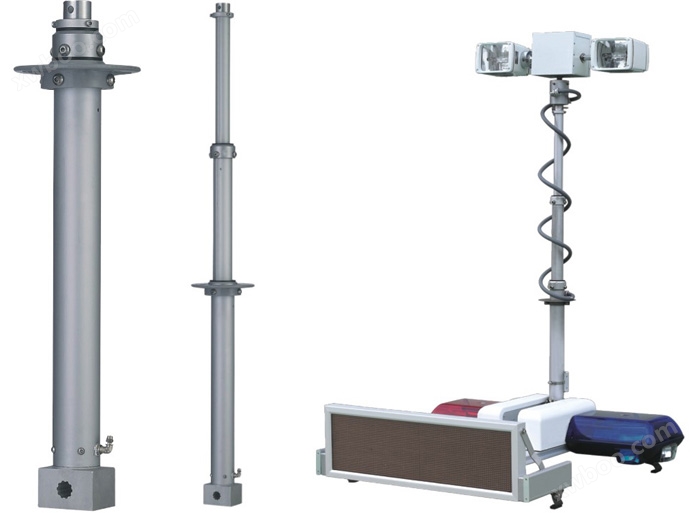CH-SJG spline series energy-saving lifting mast
Suitable for lifting mast devices installed in cars, pickups, jeeps, and other small and medium-sized vehicles; The lifting mast has functions of lifting, lowering, raising, and lowering. The mast is lifted from its initial horizontal position to 900 and then extended in the height direction to the height you need.
SJG spline lifting mast can be selected from 1.8M, 2.5M, 3.3M, and 4.5M according to requirements. If this height cannot meet the work needs of the user, our company can customize a dedicated lifting mast for you according to the user's requirements.
Performance characteristics:
(1) Using high-strength T6 aluminum alloy profiles, the exterior has undergone strength strengthening treatment;
(2) Select high-quality pneumatic components such as one-way valves and pilot operated two position three-way solenoid valves to ensure product quality;
(3) High level sealing performance (imported seals), with a 24-hour lifting mast sliding down less than 5mm in a stationary state.
Ordering specifications:
SJK-18-FA-YS (FA: Wire tray YS: Outer circle with magnetic attachment DS: Bottom with magnetic attachment)
Technical parameters:
| Technical parameters of CH-SJG spline lifting mast | ||||
| SJG-18 | SJG-25 | SJG-33 | SJG-45 | |
| Number of sections | 3 | 4 | 4 | 5 |
| Closing height | 710 | 880 | 1260 | 1270 |
| Raise the height | 1420 | 2350 | 3300 | 4470 |
| Maximum pipe diameter | 68 | 87 | 87 | 113 |
| Working pressure | ≤0.30Mpa | ≤0.30Mpa | ≤0.30Mpa | ≤0.30Mpa |
| Weight | ≤5.5Kg | ≤9.5Kg | ≤15Kg | ≤20Kg |
| Wind resistance | ≤ Level 8 | |||
| Top load capacity | ≤10Kg | ≤15Kg | ≤15Kg | ≤15Kg |
| product material | Aluminum magnesium alloy; T6 processing; | |||
| Surface treatment process | Anodizing; Has high corrosion resistance properties; | |||
| surface color | silvery white | |||
Product characteristics
Pneumatic lifting rod has the advantages of high load, low noise, fast lifting, low seismic resistance, strong self falling buffering performance, and stability
application area
It plays an important role in night rescue and emergency response at various natural disasters and sudden events. Golf, large football field night lighting.
technological process
Made of high-strength aluminum alloy, it is lightweight and meets the height and load requirements of different fields and occasions
Technical Instructions for Use
Pin self-locking is a mechanical positioning of each section of the mast based on the structural characteristics of the mast cylinder body model, using the shear force between the full-length foreign key on the outer wall of the cylinder body and the spring pin on the sleeve. The positioning effect depends on the material and cross-sectional area of the key. Due to the aluminum alloy material of the mast cylinder body and the small cross-sectional area of the key, this pin self-locking device is only suitable for small and medium-sized masts with lighter loads.
Direct pull self-locking is generally suitable for masts with an initial height below 1.6m, while diagonal pull self-locking is suitable for masts with an initial height above 1.6m.
The self-locking of the brake is achieved through the frictional force between the brake and the lifting rod, which is equivalent to the wheel and brake device. When using a self-locking mast with a brake, it is necessary to tighten the brake. The required braking force depends on the size of the load, and the tighter the rotation, the greater the braking force. In practical operation, using a torque wrench can clearly determine whether the braking force meets the load requirements. The wrench or torque wrench is an optional accessory, and the calculation method for the self-locking braking force of the brake is to use the formula for tightening torque with threads.
To tighten the torque value, Nm
The F bolt bears clamping force, N;
D thread diameter, mm; P is thread pitch, mm
The integrated brake and the separated brake can achieve the same braking effect, but the difference lies in whether the design can meet the requirements for the initial height, lifting height, and load of the mast. Under the same conditions, the initial height of the separated brake mast can be made lower or raised higher.
Product application examples:



